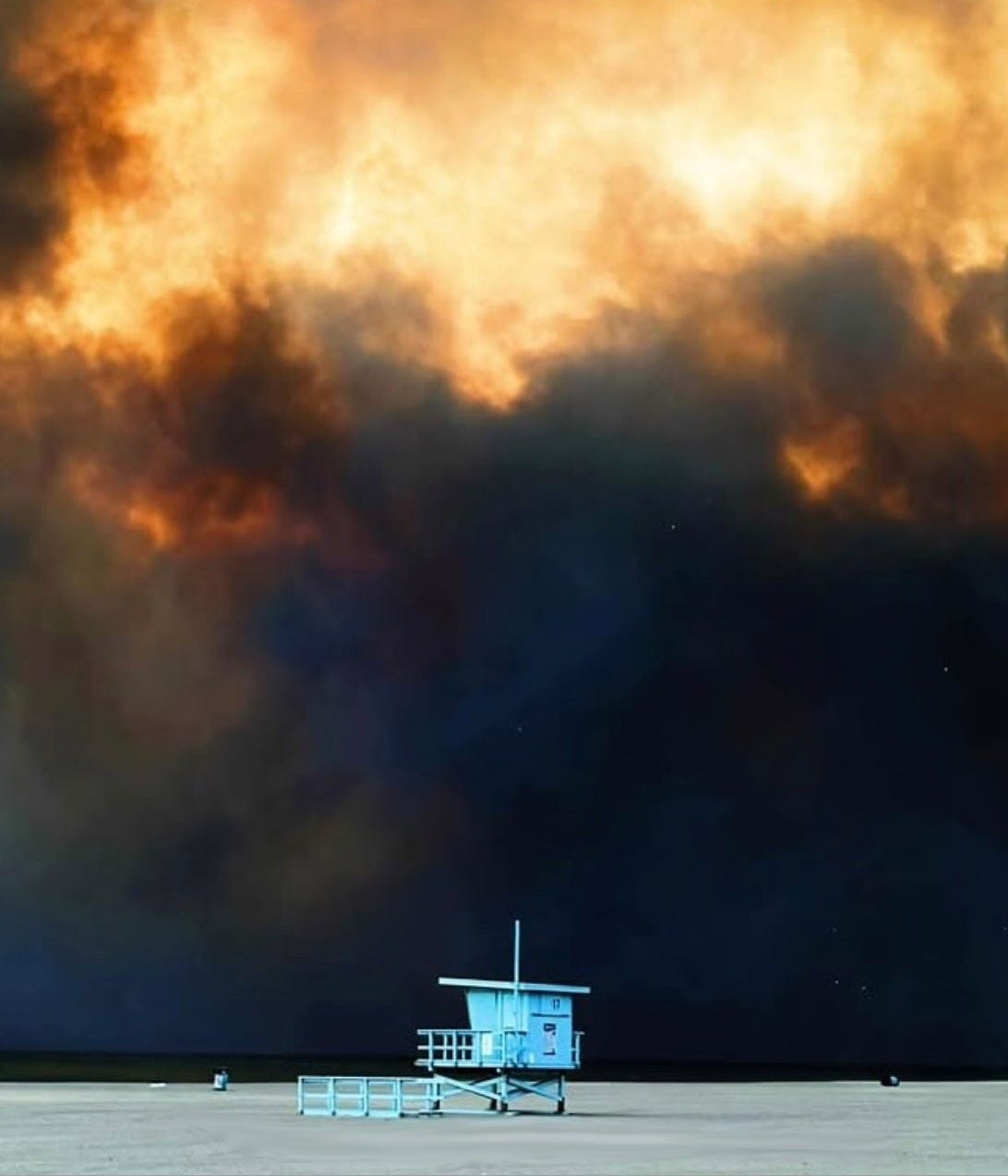FireDome: The Iron Dome Stopping Wildfires
Beyond the Headlines: From Vision to Value
We all know the pain and magnitude of devastation caused by wildfires. They’re not going away. Yet current prevention methods are limited and mostly reactive, dependent on humans, leaving them vulnerable to injury and death. The few preventive tools in our toolbox are no match for a fire exploding from high winds, drought and extreme heat. What if there were a way to protect life and property from being reached by fire in the first place? FireDome is working to achieve that with proactive protection assisted by AI. It acts as a high-tech firefighter that never sleeps. Using advanced cameras and AI, it detects wildfires early and launches fire retardants to stop them in their tracks. The company says it is an eco-friendly, automated system that protects property and land without needing people on the ground. How is AI in Action here? Basic components would include:
Real-Time Monitoring: Cameras detect embers and spot fires
Pattern Recognition: AI algorithms identify early fire indicators
Automated Response: AI directs the launch of fire-retardant capsules
Predictive Modeling: AI analyzes weather and terrain to predict fire paths
As an instructional opportunity, what would a system need to consider in the creation and success of this product? Let’s consider a few elements.
Stakeholder Governance would be critical. All the stakeholders, from community members to environmental groups to insurance companies and governing bodies would need to be assured of transparency and trust while co-owning its short- and long-term implementation strategies. Their concerns would need to be addressed. Is the system reliable? Is it affected by elements such as temperature, wind velocity, humidity, and wind coating the cameras with soil or sand? Do the trajectory and thrust calculations of the launchers take those elements into account? While it is scalable, what is the smallest size property it would be viable for? Is the fire retardant truly eco-friendly? Can evidence be provided to confirm so? Does the company have buy-in from stakeholders in order to effectively and efficiently deploy its systems?
Being a new product, it would, by default, require a Change Management program. Communicate, communicate, communicate. With all stakeholders. They all need regular updates. Emergency teams and local authorities would need to be educated on all important facets of the system so they know how it works and how their actions affect it and vice versa. Pilot programs should be created in selected areas to test and refine the system. And the stakeholders should be asked for their feedback on their interactions with the system in order to improve deployment and utilization in real-world settings.
Who should oversee the company? Government? Third-party experts? And what would they be looking for? Data Collection and Oversight would be essential. Key data points might include: response time to detect fire, proposed coverage areas, environmental impact of fire retardants, audits of system performance, and transparent communication with stakeholders.
Consider Interdependencies. They are essential in the company’s roadmap. Some of these would be society’s safety and trust, insurance models and cost reductions, climate change mitigations, eco-friendly practices and products, regulatory approvals, and funding initiatives.
How would success be defined? It’s not all about the money. Other important Measures of Success might include: How much reduction in wildfire damage has been achieved? How much have firefighting costs decreased? How many fire preventions have there been? What is the public’s perception of safety and the system in general? How satisfied are the stakeholders? How easy is it to operate and maintain the system and what is the cost for same?
SUMMARY
A proactive, protective system such as that proposed by FireDome could be a sea change in the way wildfires are prevented and in the avoidance of tragic fallout. Governed with some of the foregoing insights, it could well be a tremendous additional tool in our fight against wildfires. We are keen to watch and learn more as they progress.



